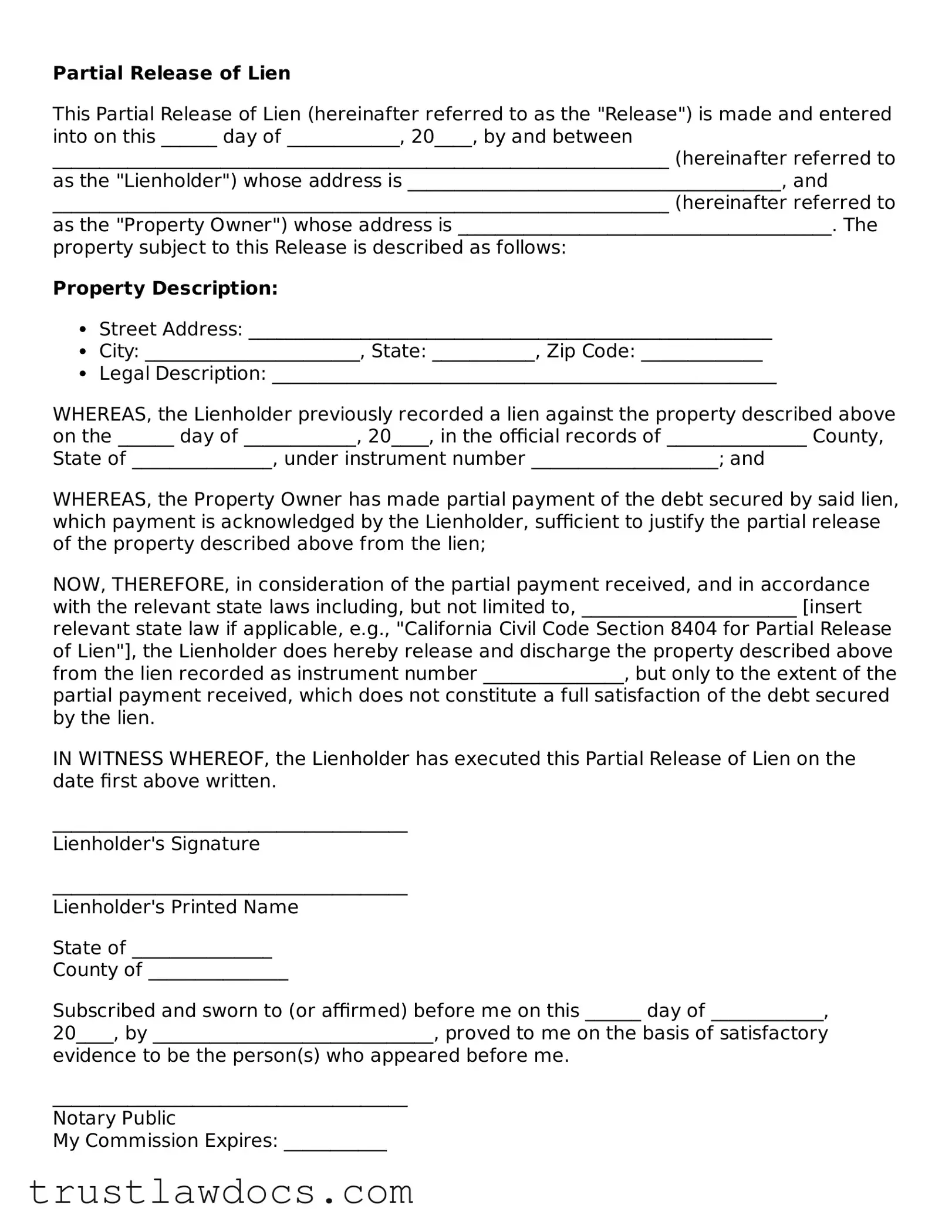What is a Partial Release of Lien form?
A Partial Release of Lien form is a legal document used when a lienholder agrees to release a portion of the property from a lien, but not the entirety. This can happen when a payment has been made that satisfies part of the debt, hence, part of the property is released from the lien, but the remainder is still subject to it.
When should a Partial Release of Lien form be used?
This form should be used when a debtor has made a significant payment towards the outstanding debt that doesn’t fully settle the amount but is substantial enough to warrant the partial release of the property from the lien. It ensures that the property or part of it is no longer held as collateral for that portion of the debt which has been paid.
Who can file a Partial Release of Lien?
The lienholder, who is the person or entity holding the lien rights to the property due to an outstanding debt, is typically the one who files the Partial Release of Lien. This action acknowledges that a part of the debt has been paid and releases a portion of the property as a result.
Does a Partial Release of Lien remove the lien from the property entirely?
No, a Partial Release of Lien does not remove the lien from the property entirely. It only releases a specific part of the property from the lien, indicating that the debt associated with that particular portion has been satisfied. The rest of the property remains under lien until the full debt is paid off.
What information is needed to fill out a Partial Release of Lien form?
Filling out a Partial Release of Lien requires specific information, including the legal description of the property, the amount of debt being satisfied with the partial release, the portion of the property being released, details of the lienholder, and the remaining debt after the partial release. Ensuring accuracy in this information is crucial.
Can a Partial Release of Lien form be filed electronically?
Whether a Partial Release of Lien can be filed electronically depends on the jurisdiction's regulations. Some areas allow electronic filing of such documents, while others may require physical filing at a local government office or registry. It’s important to check the specific requirements of the local jurisdiction.
How does a Partial Release of Lien affect the property’s title?
A Partial Release of Lien positively impacts the property’s title by clearing it of the lien partially, which can make the property more attractive to potential buyers or financiers. It signifies that a portion of the debt has been resolved, thereby reducing the encumbrances on the title.
Is it necessary to get a Partial Release of Lien notarized?
Yes, typically, it is necessary to get a Partial Release of Lien notarized. Notarization helps verify the authenticity of the document, reducing the likelihood of disputes regarding the release of the property from the lien. The requirement for notarization can vary, so it is advisable to check local laws.
What happens if a lienholder refuses to provide a Partial Release of Lien?
If a lienholder refuses to provide a Partial Release of Lien, despite partial payment of the debt, the debtor may need to seek legal advice. Legal action might be necessary to enforce the partial release, especially when there's evidence that part of the debt has indeed been paid according to the terms initially agreed upon.
Can a Partial Release of Lien be reversed?
Reversing a Partial Release of Lien is uncommon and complex as it involves legal processes. It may be possible if there was a mistake or fraud involved in obtaining the release. Both parties may need to agree to reverse it, or a court order may be required, emphasizing the need for precise handling of the Partial Release of Lien.
